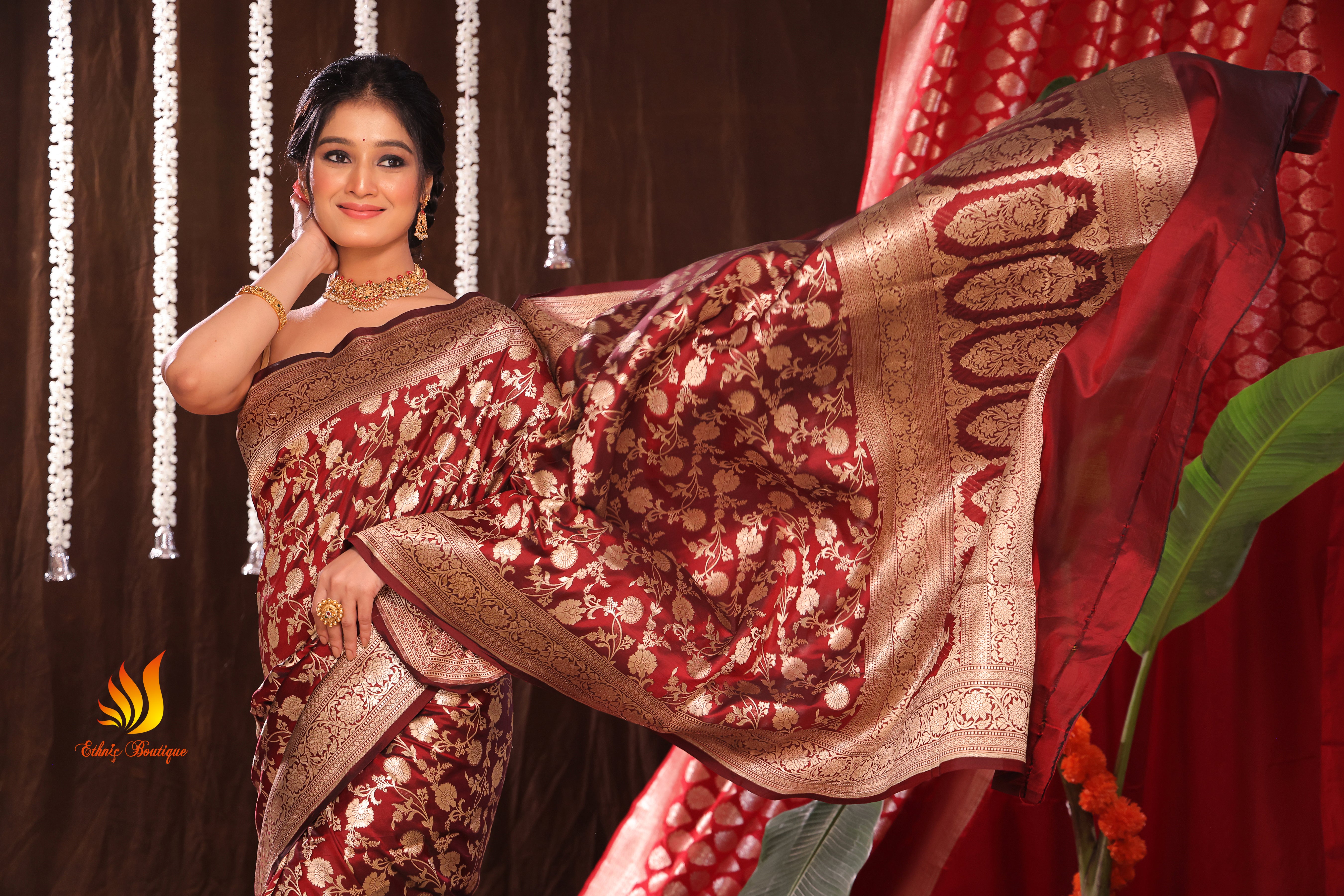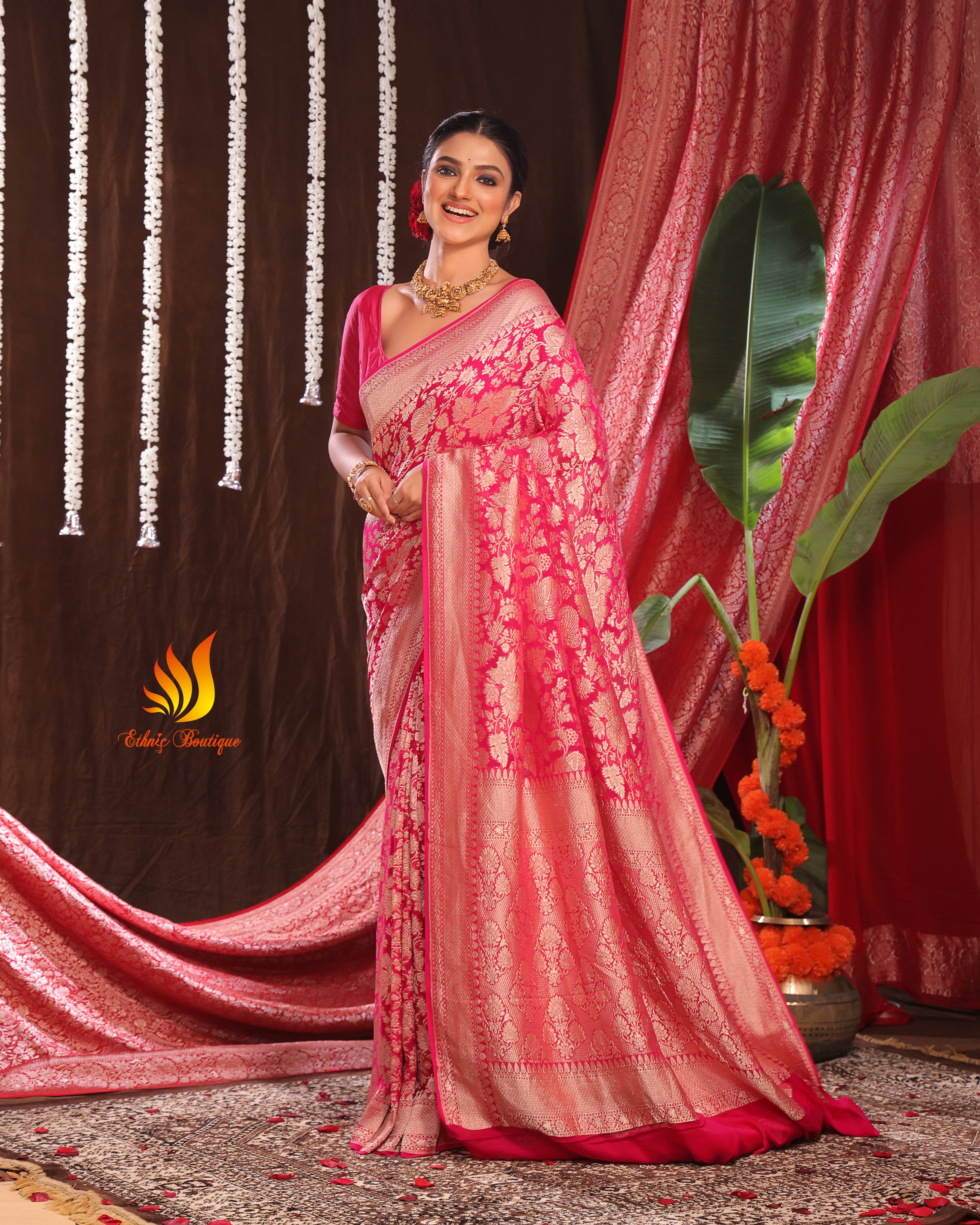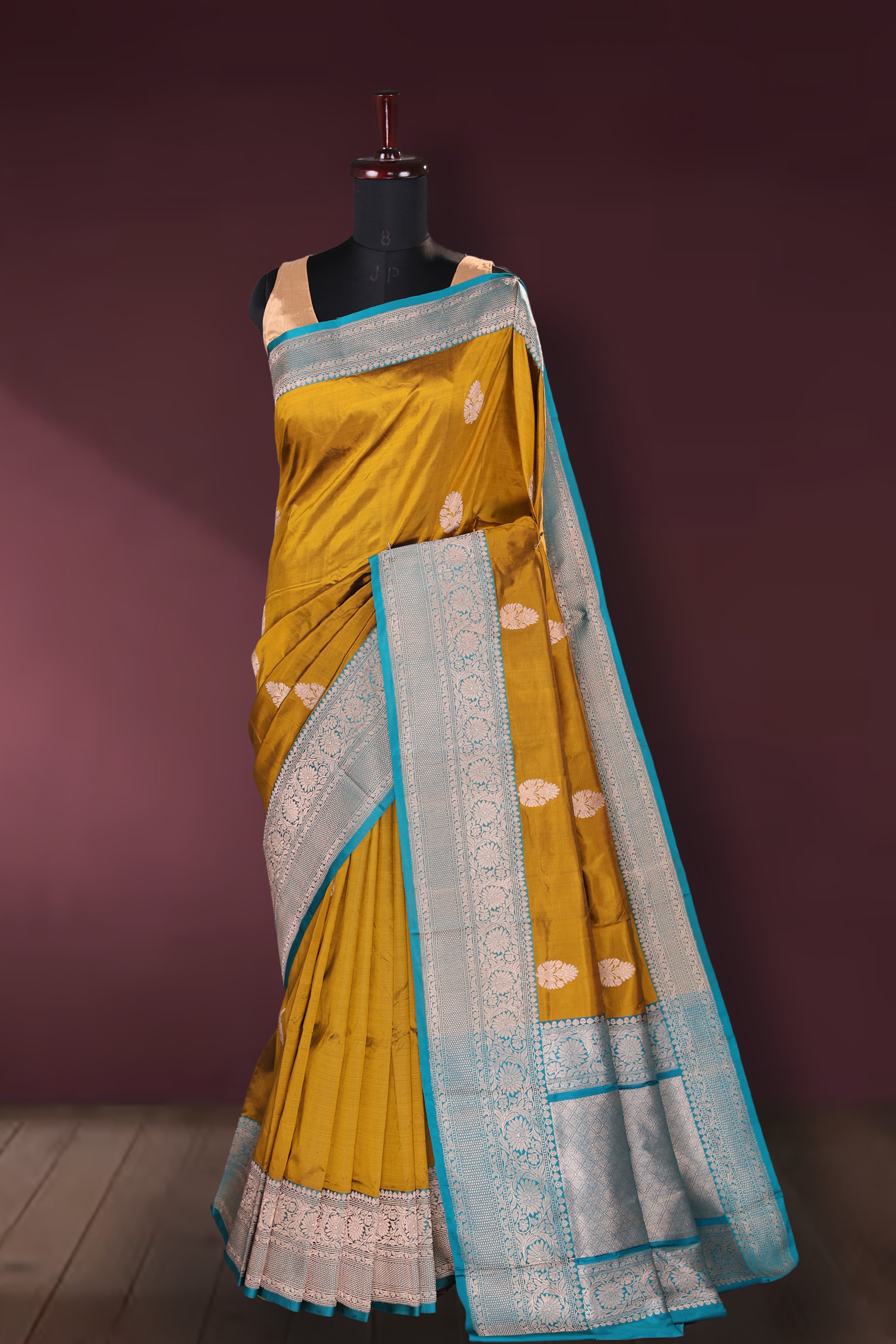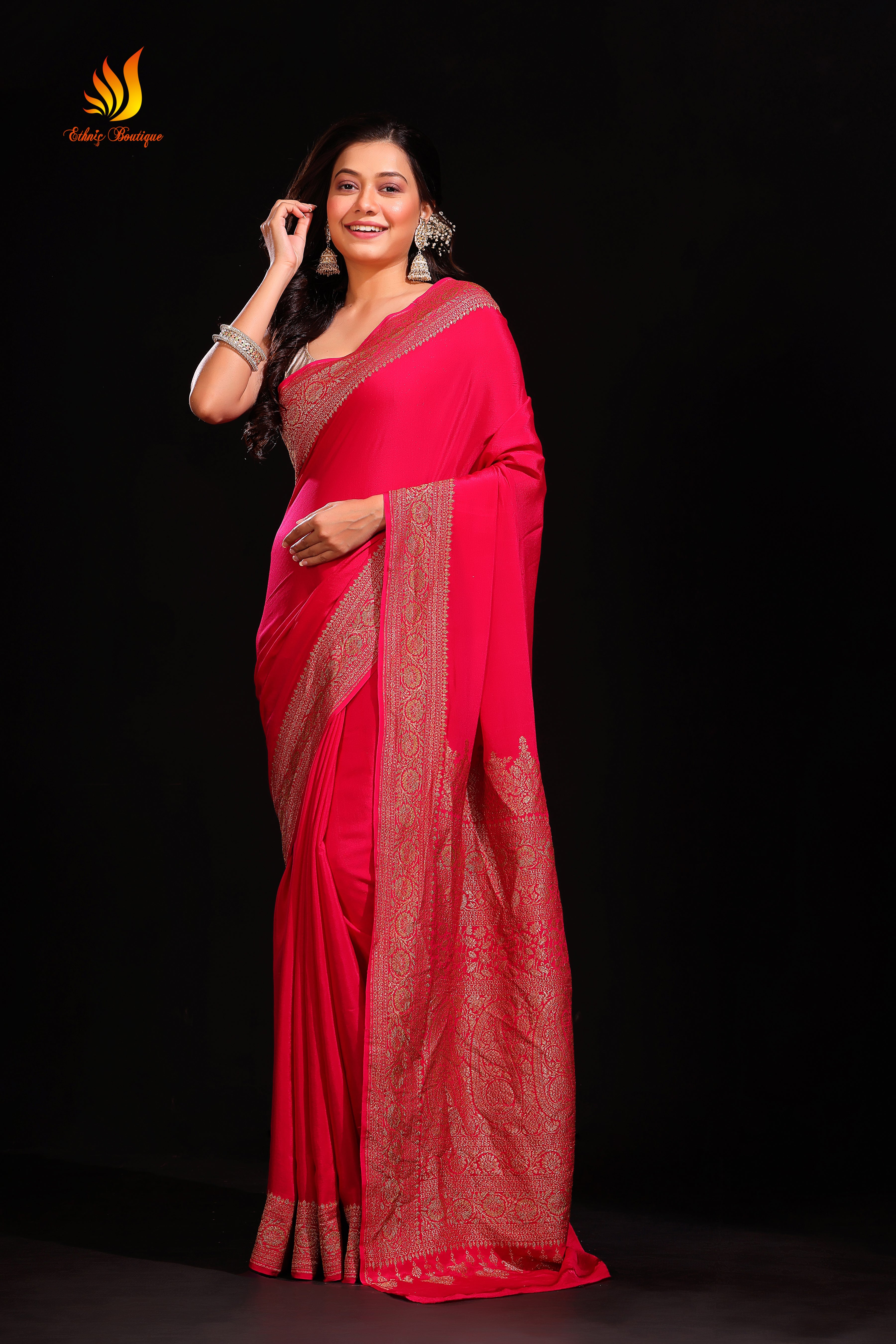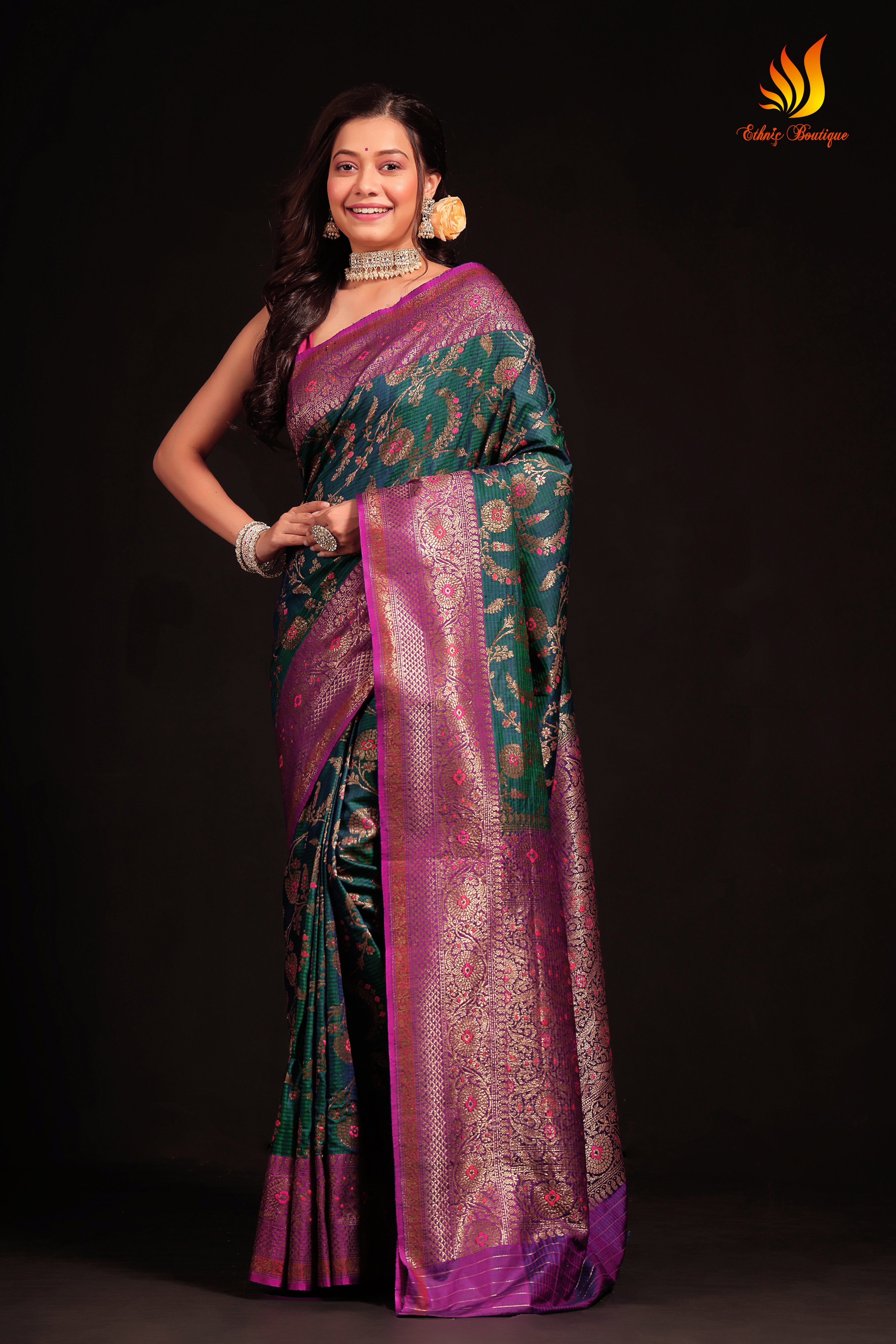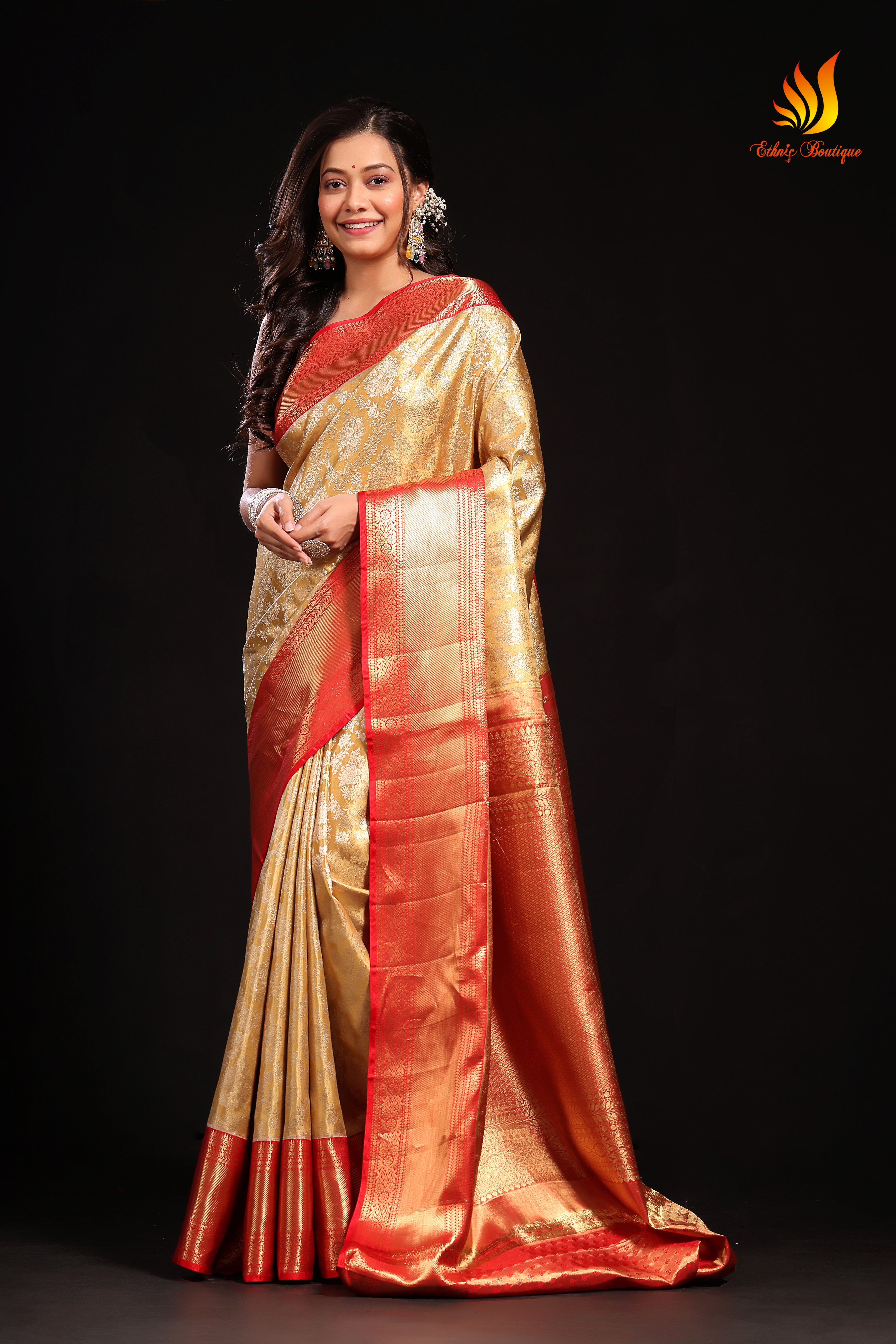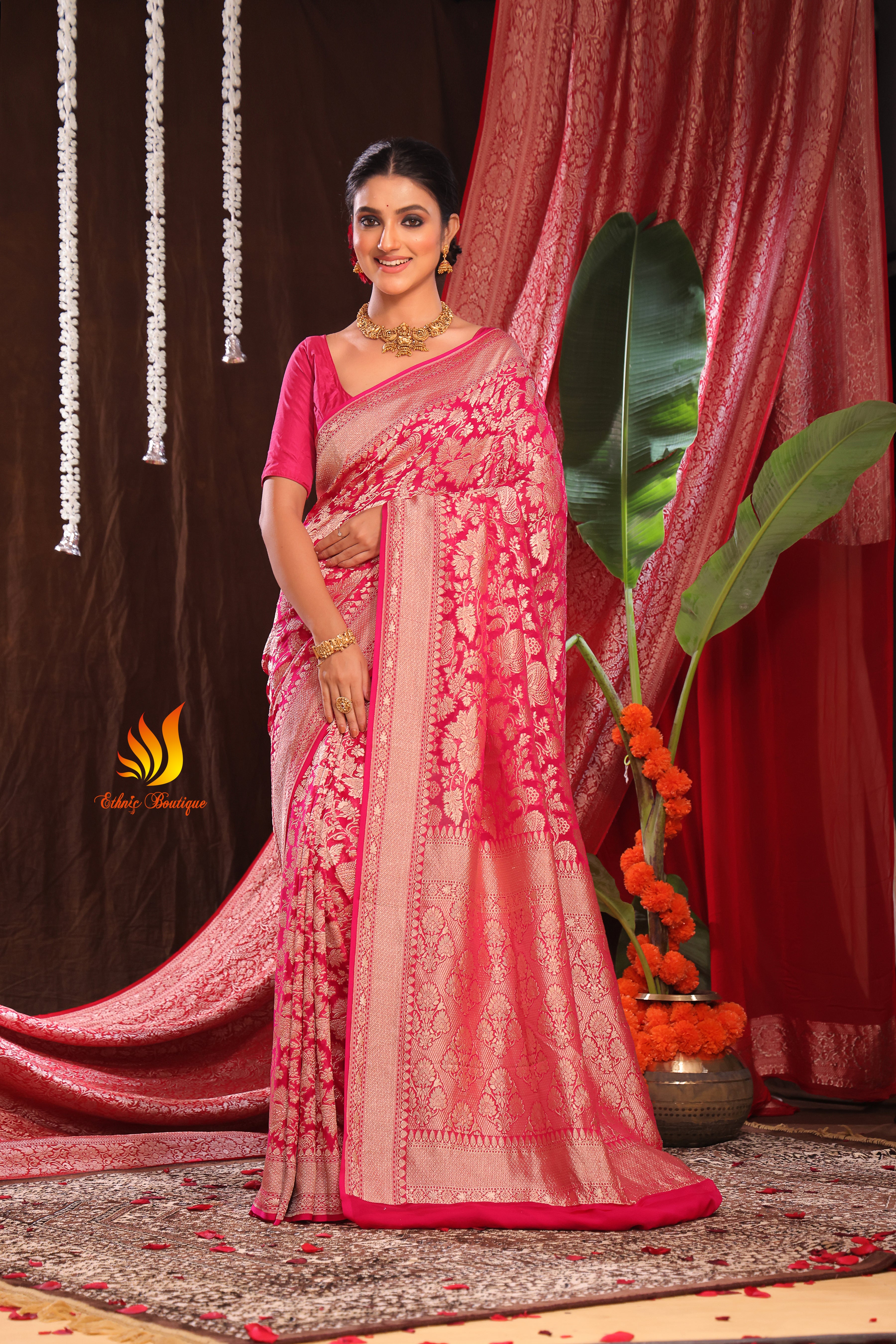A Resham Check Hand Gujarati Saree is a beautiful and traditional Indian saree that showcases the rich textile craftsmanship of Gujarat, a state in Western India known for its vibrant and intricate weaving techniques. This saree combines the elegance of Resham embroidery, the distinctive checkered pattern, and the traditional handwoven technique, making it a prized possession for many. Let’s explore the key features that make a Resham Check Hand Gujarati Saree unique:
1. Gujarati Handloom Weaving:
-
Handwoven: Gujarati sarees are renowned for their handwoven textiles, often crafted on traditional looms by skilled artisans. This gives each saree a unique touch, with slight variations that make them one-of-a-kind.
-
Heritage: Gujarat has a long tradition of weaving fabrics, with artisans passing down their techniques through generations. The intricate craftsmanship of handloom weaving, particularly in the Kutch and Saurashtra regions, is what gives Gujarati sarees their exceptional beauty.
2. Checkered Pattern:
-
Base Fabric: The base of the saree often features a checkered design, which may be woven directly into the fabric. This checkered pattern can vary from large, bold checks to smaller, delicate ones. The checks provide a structured look to the saree, allowing the intricate Resham embroidery and border work to stand out.
-
Color Contrasts: The checks can be in a variety of colors, often using contrasting tones like red and gold, blue and white, or black and silver, adding to the visual appeal.
3. Resham Work:
-
Resham: Resham refers to fine silk thread used in embroidery. The rich sheen and smooth texture of Resham thread give the embroidery an elegant finish. Gujarati sarees with Resham work feature intricate designs, such as floral, paisley, and geometric patterns.
-
Placement of Resham Work: The Resham embroidery is typically done on the borders, pallu (the loose end of the saree), or even along the pleats, enhancing the beauty of the checkered fabric. The thread work is often in gold, silver, or vibrant contrasting shades like red, green, blue, or purple.
4. Traditional Gujarati Embellishments:
-
Mirror Work: Many Gujarati sarees feature mirror work (called abhla), where tiny mirrors are stitched into the fabric to add a reflective shine. This is often done in conjunction with the Resham work, creating a dazzling effect under light.
-
Zari Work: Zari refers to metallic threads, often in gold or silver, that are woven into the saree to create intricate patterns, especially along the border and pallu. Zari work is common in many traditional Gujarati sarees and adds an element of richness and elegance.
-
Beadwork & Sequins: Some hand Gujarati sarees may also feature beadwork or sequins interwoven with the Resham thread, adding a bit of sparkle to the design.
5. Types of Fabrics Used:
-
Cotton: Traditional Gujarati sarees are often made from high-quality cotton. These cotton sarees are perfect for day events or casual gatherings, especially in hot and humid climates. The Resham embroidery contrasts beautifully against the simplicity of the cotton fabric.
-
Silk: For more formal occasions, silk or silk-blended fabrics may be used, making the saree more luxurious and opulent. Silk allows the Resham and Zari work to truly shine and gives the saree a rich, royal look.
-
Chiffon/Georgette: These lighter fabrics are used for a more flowy, elegant drape, often seen in evening or semi-formal wear.
6. Design and Motifs:
-
Floral Motifs: Flowers, vines, and paisleys are common motifs in Gujarati embroidery. These natural designs are often intricately woven using Resham thread, creating a sophisticated and timeless appearance.
-
Geometric Patterns: Some Resham Check Hand Gujarati Sarees also incorporate geometric motifs or abstract shapes, reflecting the balance of traditional design with modern aesthetics.
-
Pallu: The pallu (the portion of the saree draped over the shoulder) is often the most ornate part of the saree, with detailed Resham embroidery, Zari work, and mirror embellishments.
7. Occasions for Wearing:
-
Festivals: Gujarati sarees are perfect for festivals like Navratri, Diwali, Makar Sankranti, and Vaisakhi, where traditional attire is worn to celebrate. The intricate embroidery and bright, contrasting colors make these sarees stand out in festive settings.
-
Weddings: The richness of Resham work, Zari, and mirror work makes this saree ideal for weddings, especially for guests or bridesmaids. The traditional Gujarati saree is often worn by brides as well, combining vibrancy with elegance.
-
Cultural Events: Given its cultural significance and traditional designs, this saree is perfect for cultural performances, traditional dance events (like Garba during Navratri), or any occasion celebrating Indian heritage.
8. Draping Style:
-
The saree is typically draped in the classic Nivi style, which is the most common draping style, with the pallu elegantly placed over the left shoulder.
-
For Gujarati occasions, like Navratri or Garba (a traditional dance form), the saree may be draped with more freedom and flair, sometimes with the pallu draped over both shoulders.
-
Gujarati style drape: In Gujarat, there is a special way of draping the saree called the "Gujarati drape", where the pallu is wrapped around the body and brought over the left shoulder, often arranged in a pleated fashion at the back.
9. Care and Maintenance:
-
Dry Cleaning: Given the delicate nature of Resham work and the possible use of Zari or mirror work, it’s best to dry clean the saree to preserve the intricate details.
-
Gentle Handling: Handle the saree with care to avoid any damage to the embroidery or fabric. Ensure that the saree is stored in a cool, dry place away from direct sunlight to prevent fading or discoloration.
10. Final Thoughts:
A Resham Check Hand Gujarati Saree is a harmonious blend of traditional weaving, embroidery, and craftsmanship. The checkered pattern adds structure to the fabric, while the Resham embroidery and Gujarati embellishments elevate its visual appeal, making it an ideal choice for festive occasions, weddings, or cultural events. The intricate designs, luxurious feel, and cultural significance make this saree a timeless and elegant addition to any wardrobe.
